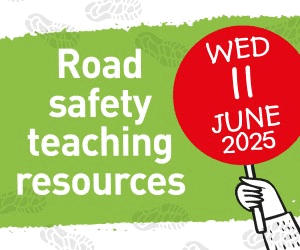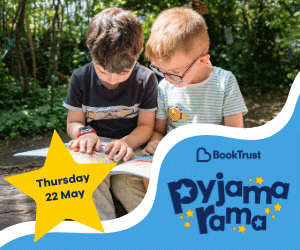Primary Times - the definitive what’s on and where to go family guide of activities and events for children of primary school age. Things to do with your kids during the school holidays including arts and craft activities, music and theatre for children, parties, competitions, days out, and family attractions along with term time drama schools, dance classes, after school clubs and sports activities. Things to do at a place near you!
Five Top Tips for Starting a School Garden
 School gardens are a wonderful way for children to interact with and learn from nature in an educational and relaxed setting. We spoke to Matt McGlashan who set up a school garden at Walmsley C.E. Primary School and has worked with the RHS on the Green Plan It Challenge and school gardens competition. Whether your school already has a beautifully crafted garden teeming with nature, or you’re looking for ideas to get started, Matt has five top tips for you.
School gardens are a wonderful way for children to interact with and learn from nature in an educational and relaxed setting. We spoke to Matt McGlashan who set up a school garden at Walmsley C.E. Primary School and has worked with the RHS on the Green Plan It Challenge and school gardens competition. Whether your school already has a beautifully crafted garden teeming with nature, or you’re looking for ideas to get started, Matt has five top tips for you.
Keep it small - As with all good gardens, you can’t do it all at once. Consider how much time, both curricular and extra-curricular, you can realistically devote to a garden each week and then begin with a project that is manageable within those time constraints.
Beg, steal and borrow - It is amazing just how much gardening stuff people are willing to donate. Parents, grandparents and local companies will often be a great source of most things you need, from bulbs to compost to old tools – you could have a ‘wear your own clothes’ day in return for the pupils bringing in bulbs. Speak nicely to your PTA and don’t forget to look into the various grants available.
Who is going to be involved? – In an ideal world every child in the school would spend part of their week gardening. In reality you need to decide which children you want to involve and when so that as many get the chance to garden during their time at your school as possible. Do you want to target specific year groups in curriculum time each year or will this be a gardening club available to different children at different times?
What can we grow? – Everything and anything! We wish, but in truth there’s no fighting what we hear time and again which is to work with the conditions you have. Make a wish list with the children and then look at what will be possible given the conditions at school and the time you have available. What type of soil do you have, have you got sunny and shady areas, is there room for raised beds?
Think plants to inspire the children. When does it flower? Avoid plants that only look great in July and August. What can they grow and eat? Focus on simple to grow veg that don’t require too much space (most fruit and veg will grow in a pot) or attention. Peas, carrots, strawberries, raspberries, onions and garlic are all good examples.
Grow what is reliable and you know does well. It is sometimes a good lesson to fail but generally you want the children to see the fruits of their labour. You want plants that are tough and reliable, look after themselves and don’t need too much attention. Native wildflowers and bulbs are great, just watch for the bullies that want to take over your garden.
Get the bones right – Getting the structure right early on will save you time and money and allow you to teach everything you want in your outside space. Think about the different elements that you would like to include, such as type of planting beds or planters, composting areas, water butts, an inside space such as a poly tunnel, wildlife friendly areas, orchards, seating, supports for climbers, paths and storage space for tools and pots. Even if you can’t do all of this at once, try to have a plan of how you want the garden to evolve over time.
Ready to get started with your school garden? Register with the RHS Campaign for School Gardening to receive a free welcome pack of resources at schoolgardening.rhs.org.uk/home.
If you already have a lively school garden of your own, don’t forget to enter the RHS School Gardeners of the Year competition which is open until 25 April. Visit schoolgardening.rhs.org.uk/competitions for more information.
Thank you to Charlton Manor Primary School and Columbia Road Primary School for their pictures. Columbia Road picture credit: RHS / Luke MacGregor




